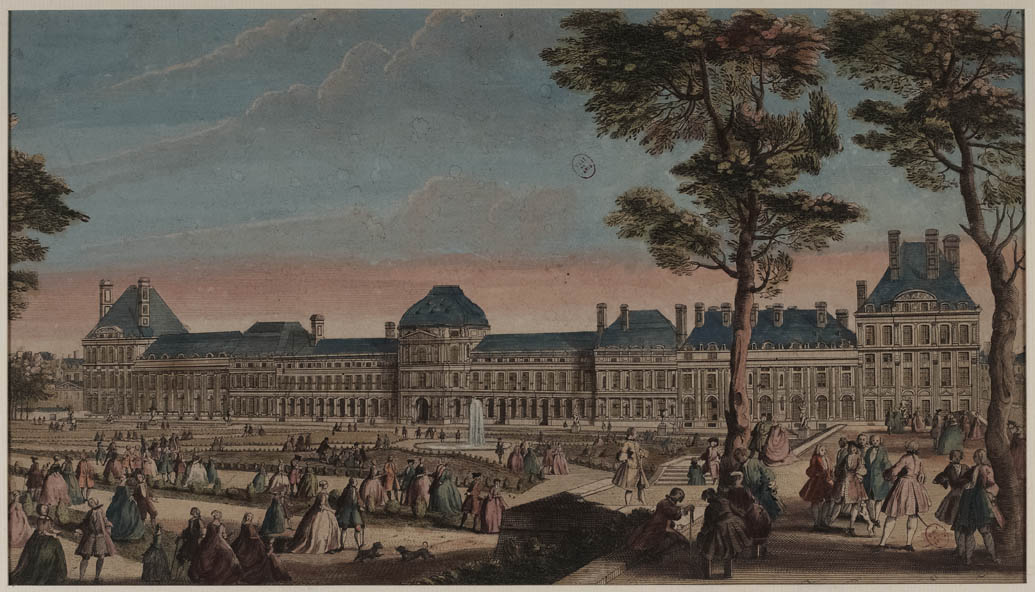The Louvre and the Tuileries neighborhood
Completely burned down during the Commune (1871), the Tuileries Palace was one of the main sites of the French Revolution. On October 6, 1789, insurgent Parisian women forced Louis XVI to leave the Château de Versailles. After having been abandoned as the royal residence for more than a century, the old Tuileries Palace and its gardens once again saw the king and his court return. Shortly afterwards, the National Assembly relocated to a neighboring building, an indoor riding academy called the “Salle du Manège.” On August 10, 1792, the Tuileries became the site of the fall of the monarchy: the palace was stormed and invaded by the people. The deputies then moved within the Palace itself, into a theater known as the “Salle des Machines.” Every day, political life animated the streets of this neighborhood: on the terrace of the Feuillants club, deputies, journalists and citizens bumped into one another. Both of the revolutionary Republican clubs, the Feuillants and Jacobins, were located nearby. The Louvre was also one of the hotspots of both the 1830 and 1848 Revolutions.

 Chronology
Chronology
-
August 10, 1792
The Tuileries Palace is taken by storm. The royal family is arrested -
July 12, 1789
The Duke de Lambesc’s regiment wounds and kills insurgents in the Tuileries gardens -
October 1789
The king, royal family, its court and the National Assembly leave Versailles and move into the Tuileries Palace in Paris -
June 20, 1792
Revolutionaries invade the Tuileries Palace for the first time -
April 6, 1793
Creation of the Public Safety Committee, which would move into the Flore Pavilion in the Tuileries -
May 10, 1793
The National Convention relocates to the Tuileries Palace, and convenes in a former theater called the “Salle des Machines” -
June 24, 1793
The Constitution of 1793 is ratified, establishing a democratic and social republic -
February 4, 1794
Slavery is abolished in the colonies -
May 20, 1795
Insurgents invade the National Convention -
October 5, 1795
Bonaparte massacres insurgents in front of the Saint-Roch church





